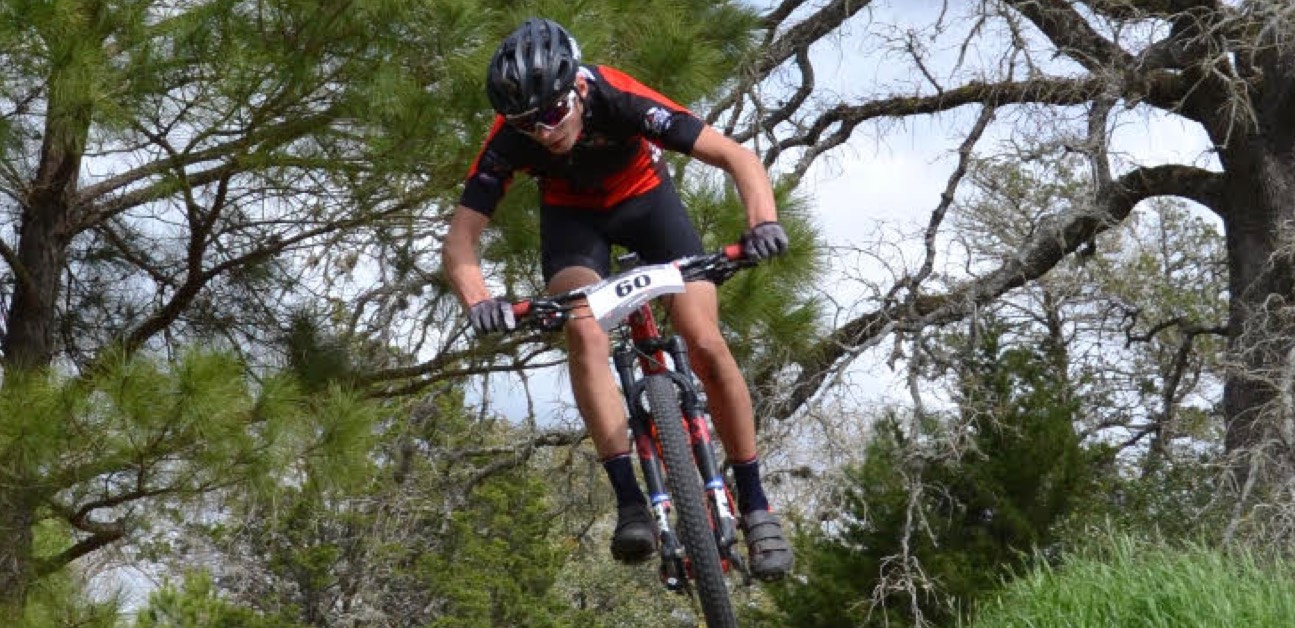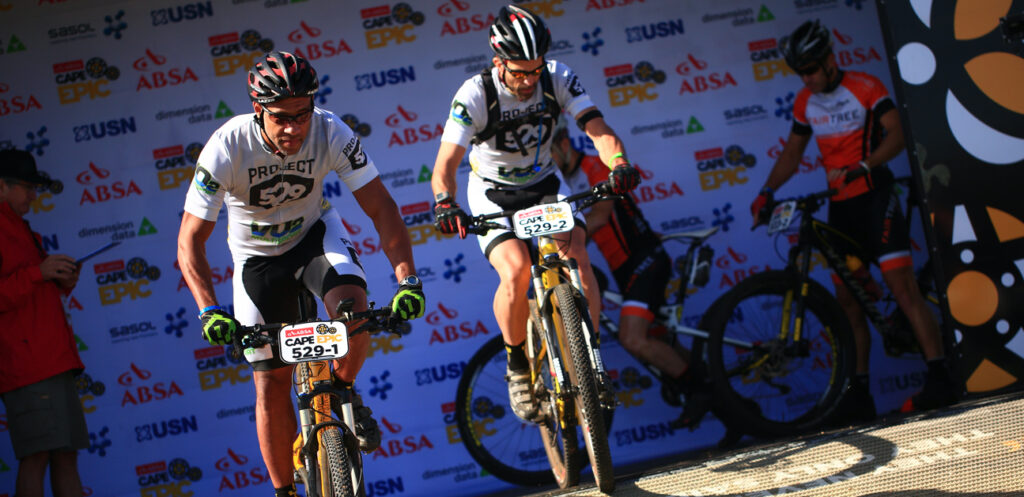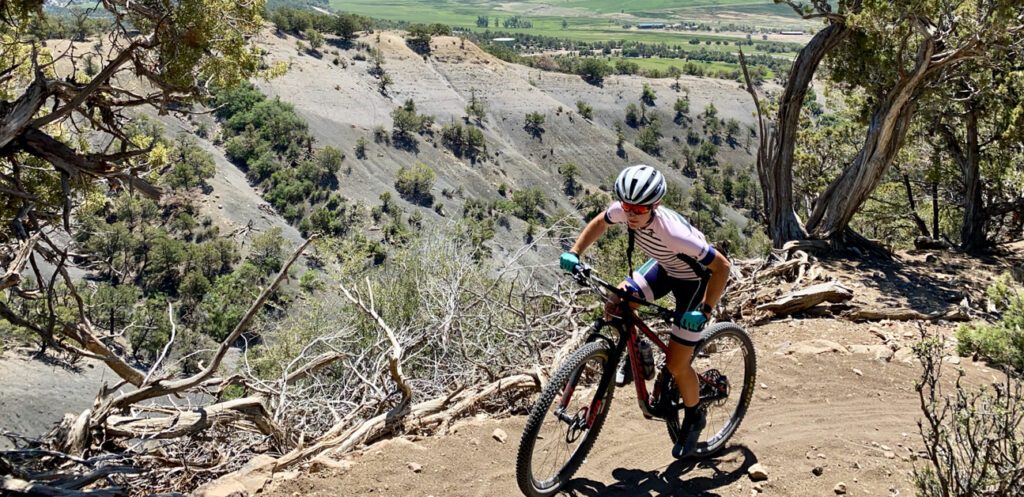Tips for Junior Mountain Bikers with Jr. Athlete Dylan Schlageter

When Dylan Schlageter joined his middle school mountain bike team, he didn’t anticipate just how far he’d progress as an XC cyclist. Now with several years of training and racing under his belt, Dylan shares his improvements and what he would recommend to other junior athletes who want to take their training to the next level.
Share your success story and tell us how TrainerRoad helped you reach your goals.
Getting Started With Mountain Bike Racing
Dylan Schlageter was introduced to mountain bike racing through the National Interscholastic Association (NICA). NICA is a non-profit that works to organize scholastic cycling leagues at a regional level. The Texas league that Dylan participates in is just one of the twenty-nine leagues in the U.S.
With core values emphasizing fun and inclusivity, NICA programs are the perfect environment for young athletes to get started with cycling. High school and middle school mountain bike leagues aim to help students of all abilities develop their skills and build community through cycling. You don’t need any prior experience to join a team, and weekly team practice gives athletes all of the support they need to progress as far as they want. For athletes like Dylan, NICA can play a big role in getting started.
Varsity and Cat 1 Racing
When Dylan got involved with his local middle school mountain bike team, he didn’t have any experience training or racing. In fact, with his experiences in cross country running, he didn’t think he’d be particularly competitive at races. Yet, with the help of his coaches and the support of his team, he quickly found that not only does he love riding bikes, he really likes racing them too.
Now a junior in high school, Dylan races in the Varsity category of the Texas High-School mountain bike league. Additionally, Dylan participates in local Cat 1/ Pro mountain bike races and ultra-distance gravel events. Later this summer, Dylan is planning on racing USAC mountain bike nationals in the 17-18 Cat 1 Division, where his goal is to finish in the top twenty.
With competitive fields at all of these events, Dylan has grown increasingly dedicated to his training. Through a combination of structure, high school practices, and strength training, Dylan’s achieved a 330 watt FTP—putting him at a very fast 5.6 watts per kilogram. This level of fitness didn’t happen overnight, though. Behind his current training volume has been a gradual progression into structured training.
Structured Training
When Dylan decided he wanted to take his racing more seriously, he decided to hire a private coach. Working with a coach introduced Dylan to a structured training plan and a more consistent training program. While he felt motivated to stick to a training plan, the personal coaching format wasn’t giving him quite as much value as he had hoped. After deciding to explore different training options, he landed on TrainerRoad.
Adaptive Training
Get the right workout, every time with training that adapts to you.
Check Out TrainerRoadDylan’s first TrainerRoad training plan was a low-volume sweet spot base plan. For him, that was the perfect volume to start with, with just enough structure and challenge to keep him getting faster. “I think TrainerRoad is great for NICA kids because it’s a great entry point for structured training,” he says. As he progressed, Dylan was able to increase the volume of his plan steadily over time.
Now, Dylan uses indoor training, Outside Workouts, and the structure of TrainerRoad to train for his events. As a self-identified data-oriented cyclist, doing structured workouts works well for Dylan. Intervals, power analysis, and structured workouts keep him motivated and on track with his goals. With the fitness he’s earned, Dylan’s placed in the top five at most high school Varsity races and race at a competitive level outside of the league.
Tips for Junior Athletes Interested in Structure
For Dylan, a gradual progression from unstructured to structured, low-volume to high-volume, beginner to expert, has brought him to where he is today. That’s not to say the progression has always been linear. In it, there’s been a lot of hard work and plenty of lessons learned along the way. For anyone interested in trying structure or taking their racing to the next level, these are Dylan’s top five pieces of advice for other fellow juniors.
1. “Focus on workout progression, not overall volume.”
It can be tempting to crank up the training volume when you decide to pursue a more dedicated training regimen. Dylan recommends focusing on the progression of your training and not worrying about increasing the volume. Focusing on the progression of your training ensures that you aren’t loading on too much volume at once. With tools like Workout Levels, you can see how your training plan progresses your fitness as you follow the plan.
2. “DON’T focus on your weight.”
On the other side of things, Dylan recommends that junior athletes don’t focus on their weight. “Everybody grows differently as a teenager, so don’t compare yourself too much with others,” he says.
3. “You don’t need a power meter.”
Dylan reminds athletes that they don’t need a power meter or a smart trainer to do structured training. Athletes can train indoors with Virtual Power, using just a trainer and speed sensor. Or they can take their workouts outside and use rate of perceived exertion to gauge their efforts.
4. “Incorporate Cross-training.”
Dylan also encourages other junior athletes to incorporate some form of cross-training into their training progression. As a part of his regular training week, Dylan adds in strength training when he can. Training at the gym helps round out his capabilities as a cyclist, improves his well-being, and makes him feel healthier on and off the bike.
5. “Weave fun into training whenever you can.”
Having goals at the national level doesn’t mean training can’t be fun. Dylan still makes a point to integrate what he loves about mountain biking into his training. During the week, Dylan still joins the high school team for practices, where he gets to train with his friends and coaches. On weekends, Dylan likes to get outside for long trail rides with his friends. He says, “Riding with friends is extremely motivating.” When they get out onto the technical trails of Austin, Texas, they can practice technical skills together, which has helped him progress his descending. He also takes a lot of his interval training outside with Outside Workouts. When he does this, he tries to plan his routes to have a fun descent at the end of every interval.
This balance of structure and fun has been key to helping Dylan reach his goals and get faster while still maintaining the joy that got him started.


